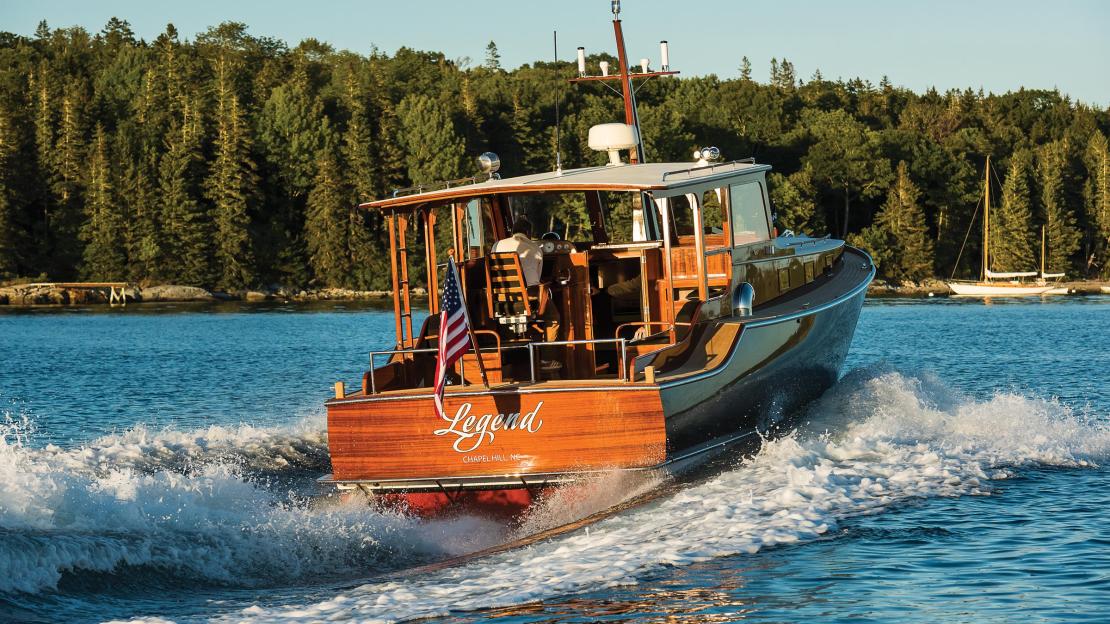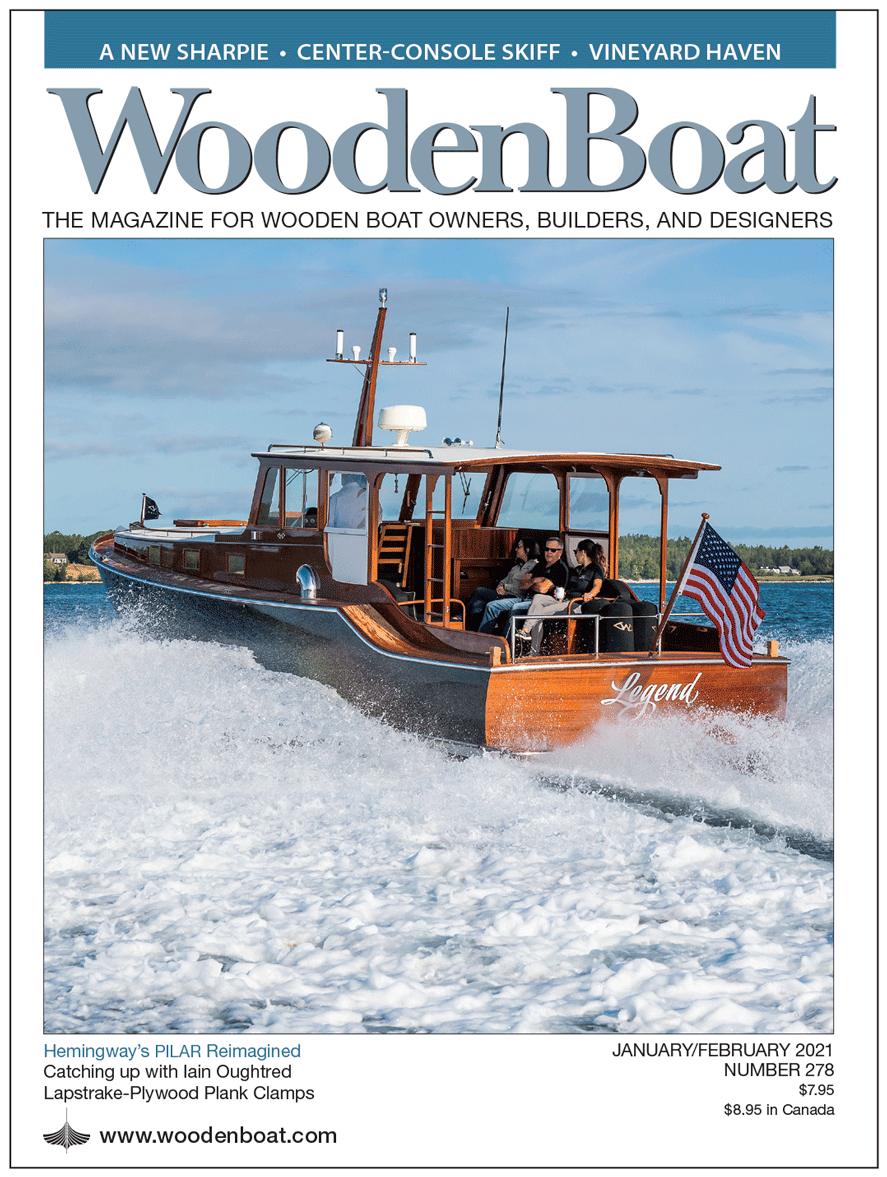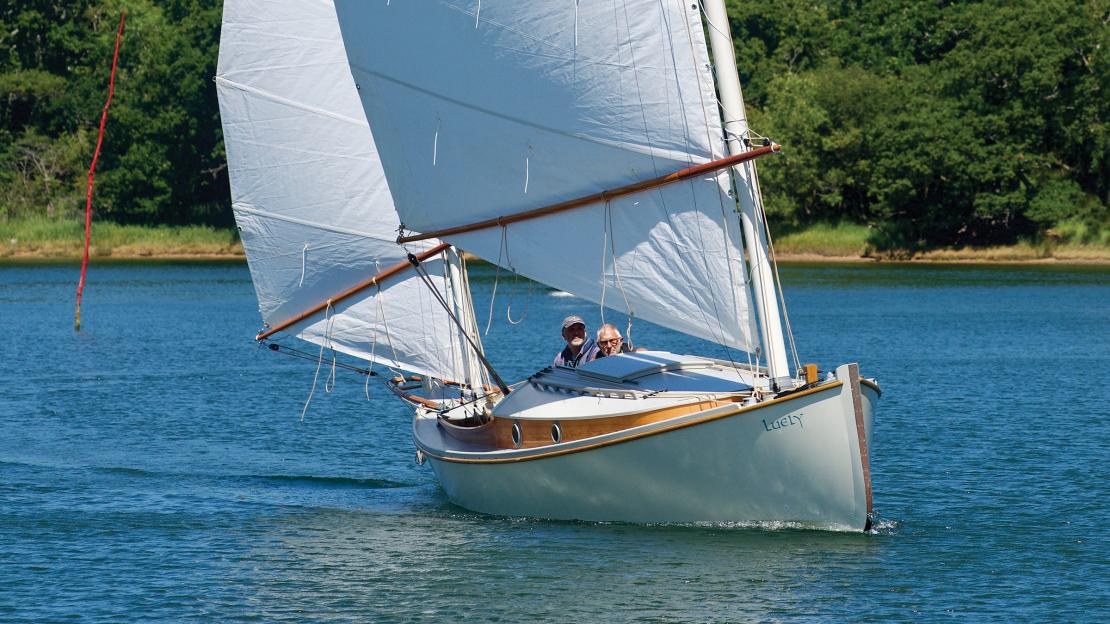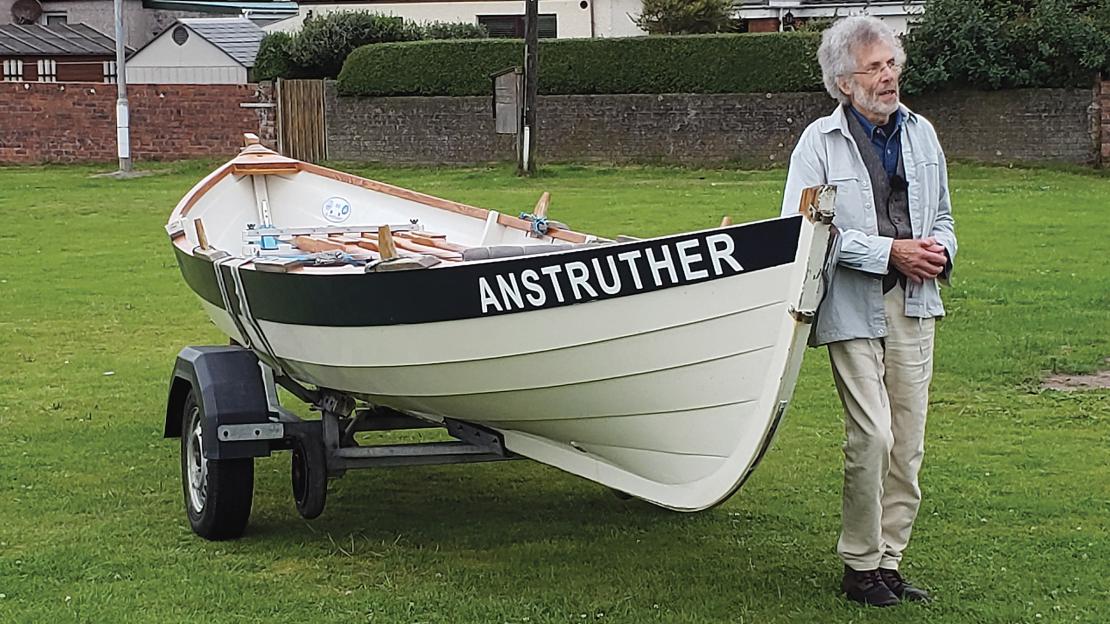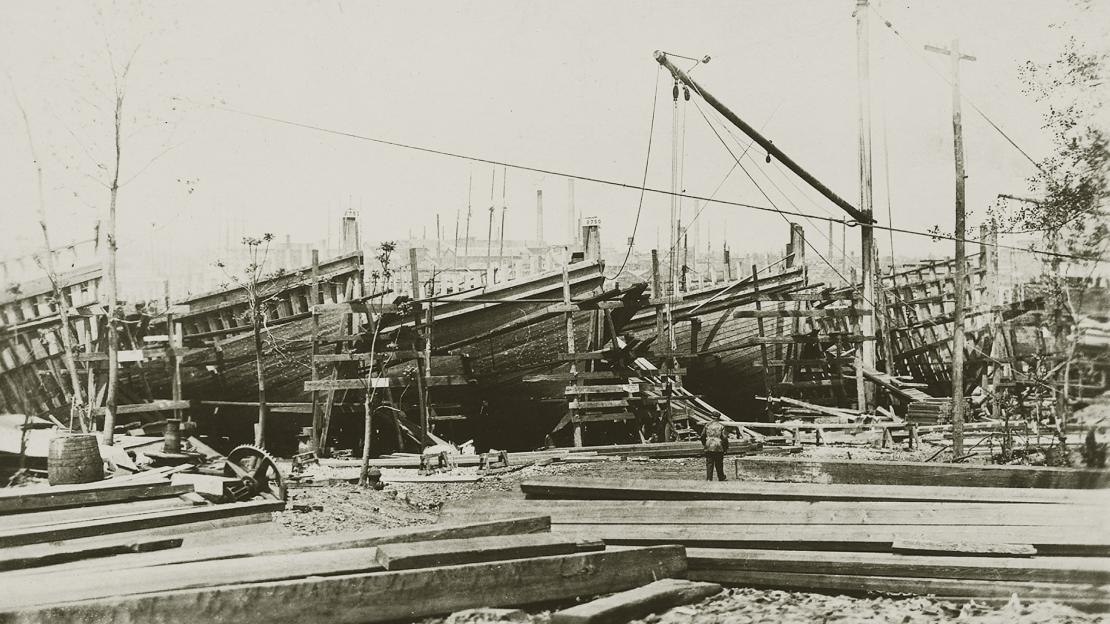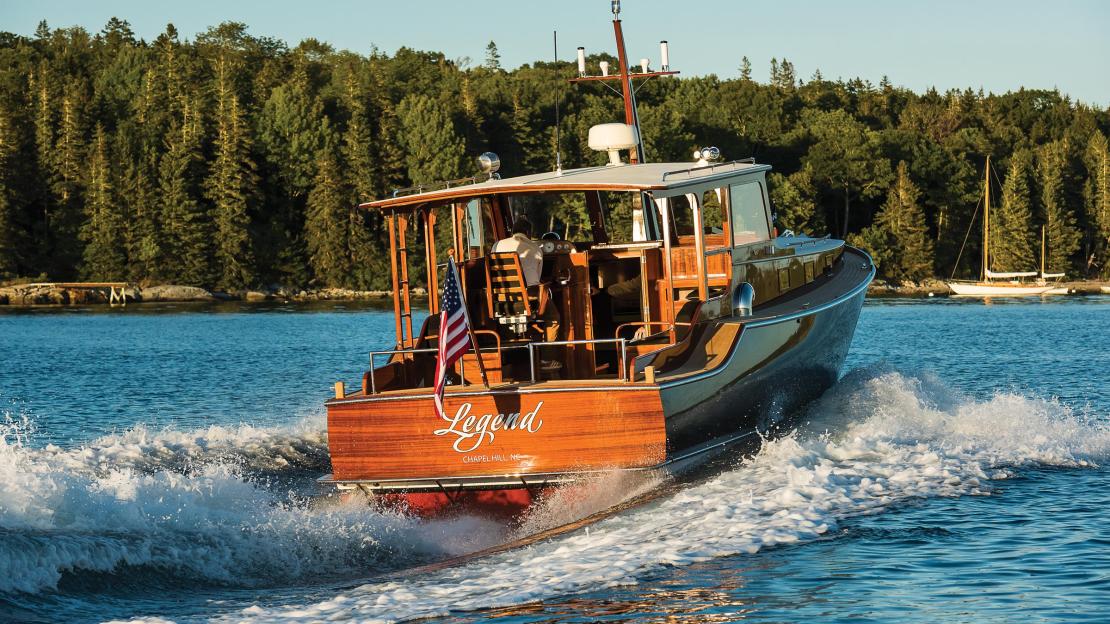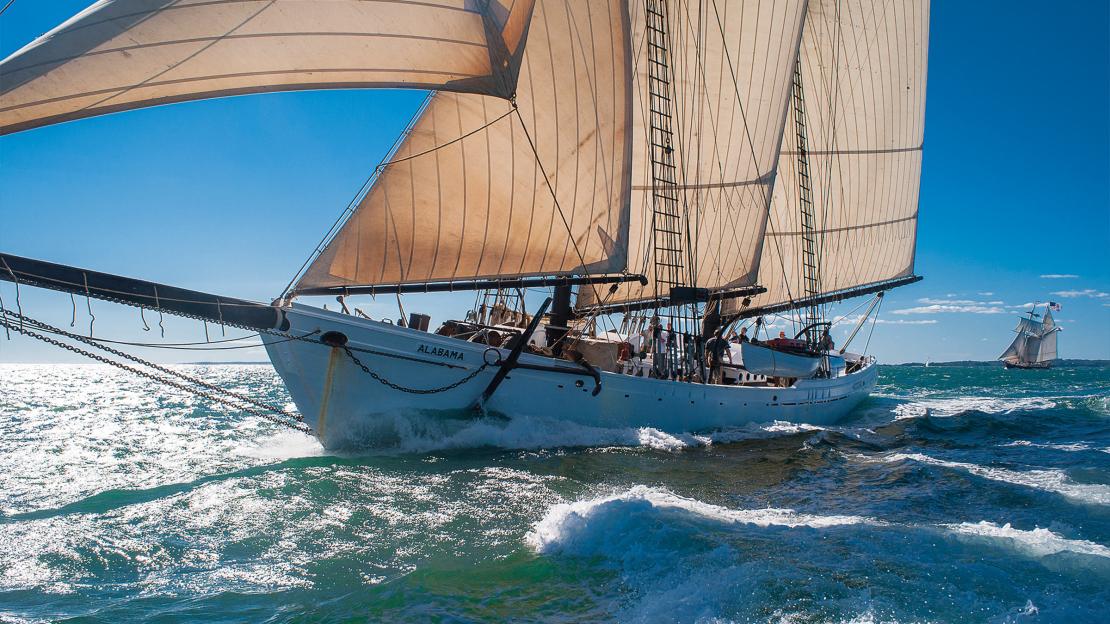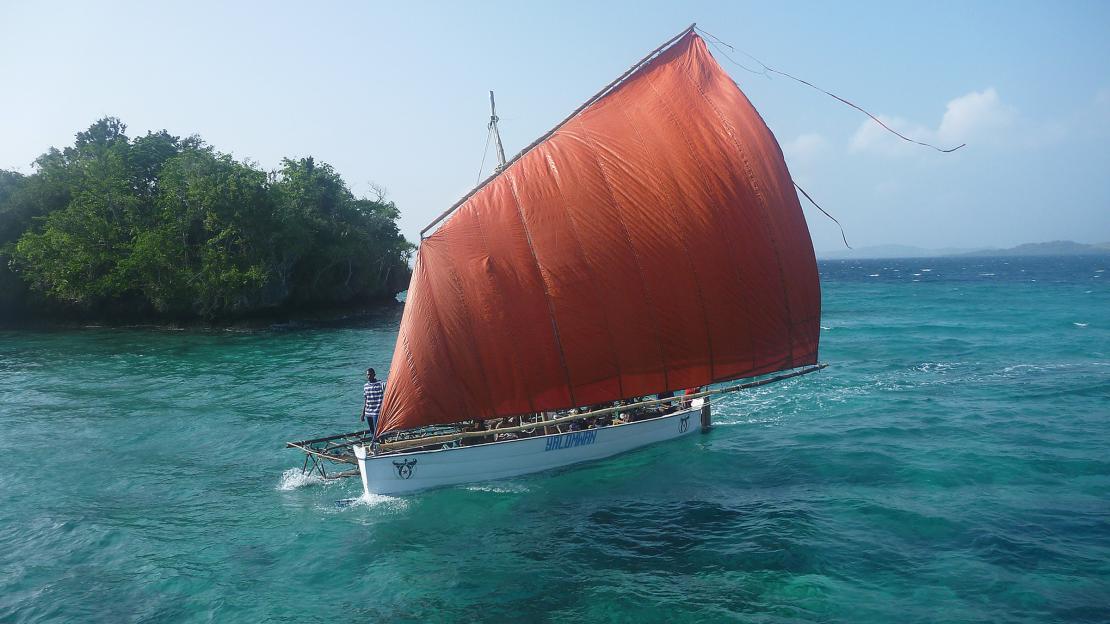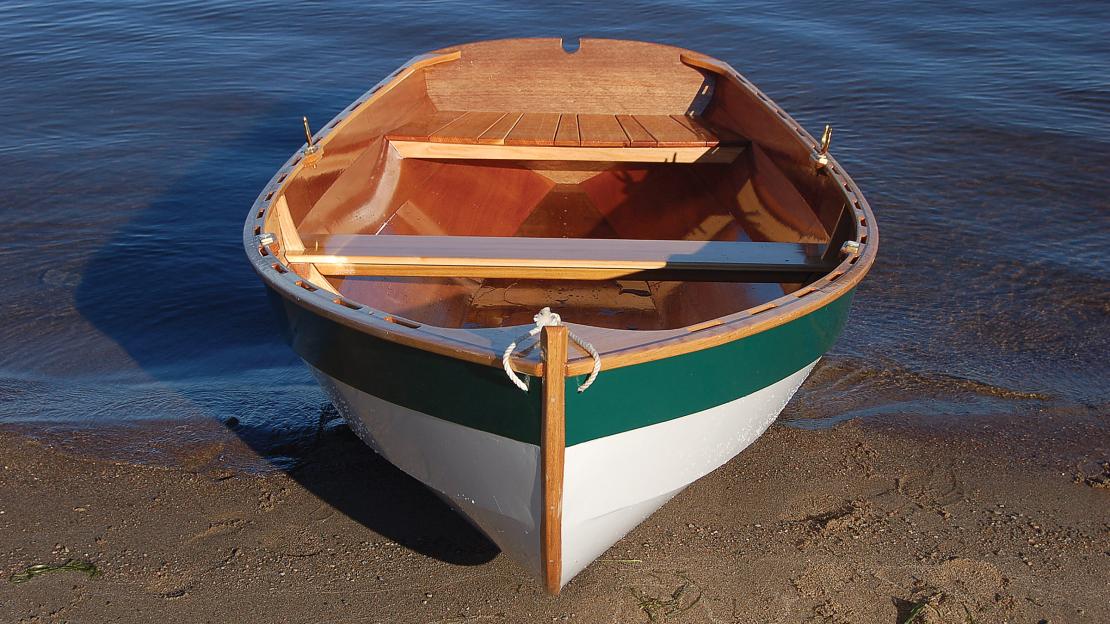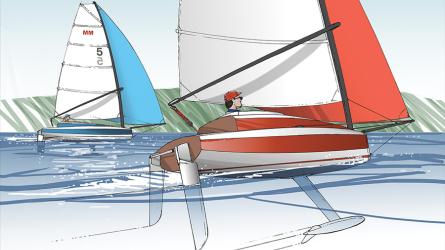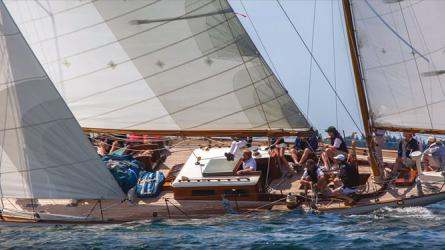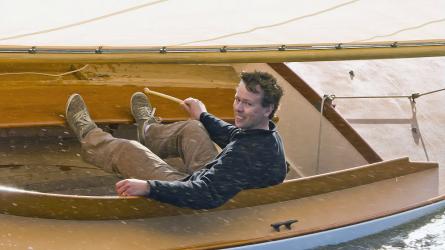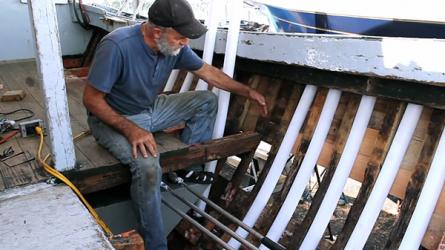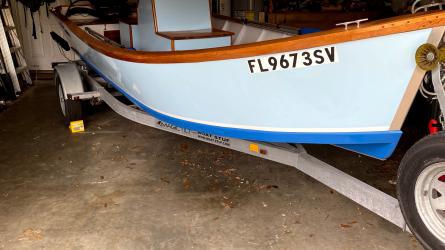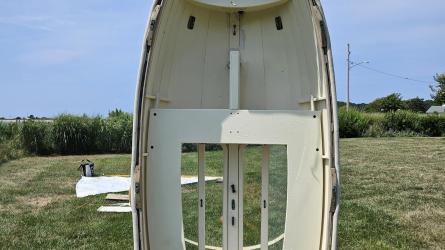The Fabric of a Culture
Just after the conclusion of the Australian Wooden Boat Festival in February 2019, after the crowd had diminished to almost nothing, I took a stroll along the waterfront of Hobart, Tasmania, to ogle the collection of fine wooden boats that still half-populated the city waterfront. Much of the show fleet had already cleared away, and those that remained somehow seemed more precious and vivid in their rarity.
The docks were nearly devoid of people. I was delighted, therefore, to encounter an old friend as I walked along. I’d met David Payne, a curator with the Australian National Maritime Museum in Sydney, years earlier. In the intervening time, he’d done some writing for WoodenBoat, and we’d corresponded occasionally. After we exchanged pleasantries there on the dock, David produced his laptop and showed me a sampling of his exquisite drawings that had resulted from a documentation project he’d conducted of the indigenous canoes of Papua New Guinea (PNG). We immediately hatched a plan to adapt his work for an article in WoodenBoat. That article begins on page 72 of this issue.
As David notes in his introduction, the canoes of PNG’s Massim Bay Province, the focus of his study, “are woven into the fabric of the region’s culture.” And that culture is expressed through a colorful and sophisticated artistic style that suffuses the boatbuilding tradition. David’s project was part of a documentation of that artistic tradition, and one of his colleagues in the project, Harry Beran, is quoted in an Australian Broadcasting Association article as saying, “My guess is that in 50 years’ time, perhaps the whole art tradition will have disappeared and I’m trying to describe this art tradition while it’s still possible.”
I was struck recently by how fragile these traditions are, when reading Ben Fuller’s review of the new book, The Bark and Skin Boats of Northern Eurasia (page 88). They were “about two centuries too late…,” Ben writes of the research challenge the authors faced. The new book is inspired by a 1964 work by Edwin Tappan Adney and Howard Chapelle, The Bark Canoes and Skin Boats of North America, which documented the native craft of North America. Adney gathered the material for the earlier book by conducting field research: measuring boats, interviewing builders, and producing drawings—much as David Payne did in PNG.
The authors of The Bark and Skin Boats of Northern Eurasia, however, had no living builders to interview, and few boats to measure. Still they managed to produce a groundbreaking introduction to the topic of how native Eurasian boats originated and were used—and by whom. But they simply did not have the living objects and memory to create the detailed drawings of the type found in the Adney book—or in Payne’s study.
And therein lies the crux of the challenge of maritime preservation. As the old fleet has cleared away, and as its survivors have become difficult to maintain, its preservation has often been in the hands of a few artist-technicians able to preserve it on paper—in words, photographs, and drawings.
And then a culture of appreciators springs up, like the one in Hobart, or the one in Vineyard Haven, Massachusetts (see page 62), where traditional Bahamian boats, Scottish wooden yachts, and schooners built in Bangkok share the harbor. The boats in these places are like art, as important to the fabric of the culture as painting, poetry, sculpture, or literature. And the beauty and utility of timeless design lives on.

Editor of WoodenBoat Magazine
